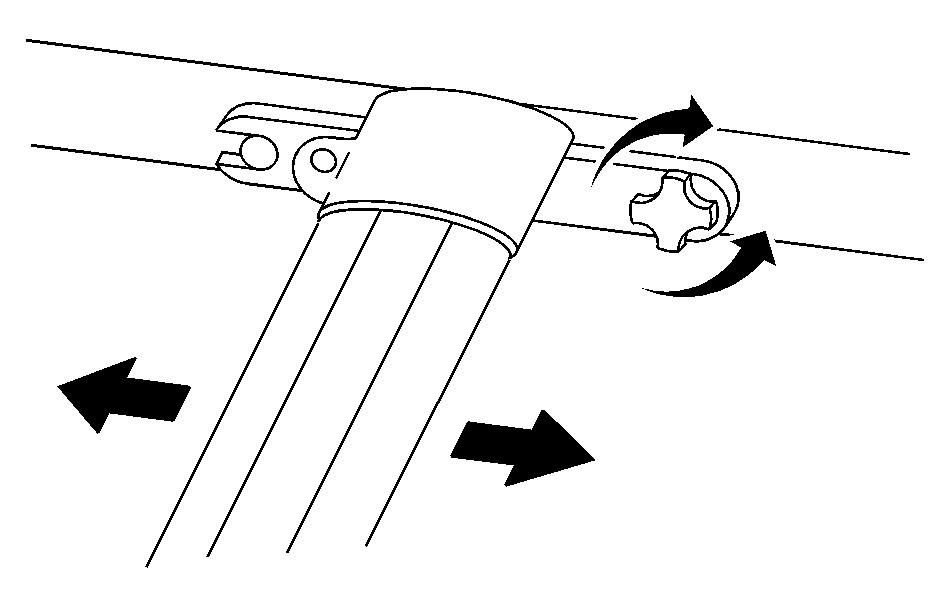Caution: If something is carried on top of the vehicle that is longer or wider than the luggage carrier -- like paneling, plywood, or a mattress-- the wind can catch it while the vehicle is being driven. This can cause a driver to lose control. The item being carried could be violently torn off, and this could cause a collision, and damage the vehicle. Items may be carried inside. Never carry something longer or wider than the luggage carrier on top of the vehicle.
If your vehicle is equipped with a luggage carrier, it has side rails and may be equipped with crossrails attached to the roof to secure cargo.
Use GM accessory racks that are compatible with your luggage carrier for transporting sports equipment. These are available through your GM dealer.
The crossrails, if equipped, are adjustable, but are only designed to move a limited amount. The front and rear crossrails are not interchangeable. If you do remove the crossrails, make sure to mark them with front or rear. When replacing the front and rear crossrails, make sure to but them back in the same position they came from as the front rail is slightly longer than the rear rail.
Just loosen the slider knobs at each end of the crossrail to move them.
| • | The front crossrail has limited movement when traveling rearward. |
| • | The back crossrail has limited movement when traveling forward. |
After adjusting them, make sure both sides of the crossrails are even, then tighten the slider knobs.

Be sure the cargo is properly loaded. Follow these guidelines:
| • | Carrying small, heavy loads on the roof is not recommended. |
| • | Do not load cargo directly on the roof panel. |
| • | Tie the load to the tie down loops at both ends of the crossrails to keep loads from shifting. |
| • | If you need to carry long items, move the crossrails as far apart as possible. Tie the load to the tie downs provided. Do not tie the load so tightly that the crossrails and side rails are damaged. |
Notice: Loading cargo on the luggage carrier that weighs more than 100 lbs. (45 kg) or hangs over the rear or sides of the vehicle may damage your vehicle. Load cargo so that it rests on the slats as far forward as possible and against the side rails, making sure to fasten it securely.
Don't exceed the maximum vehicle capacity when loading your vehicle. For more information on vehicle capacity and loading, see Loading the Vehicle .
To prevent damage or loss of cargo as you're driving, check now and then to make sure the luggage carrier and cargo are still securely fastened.
